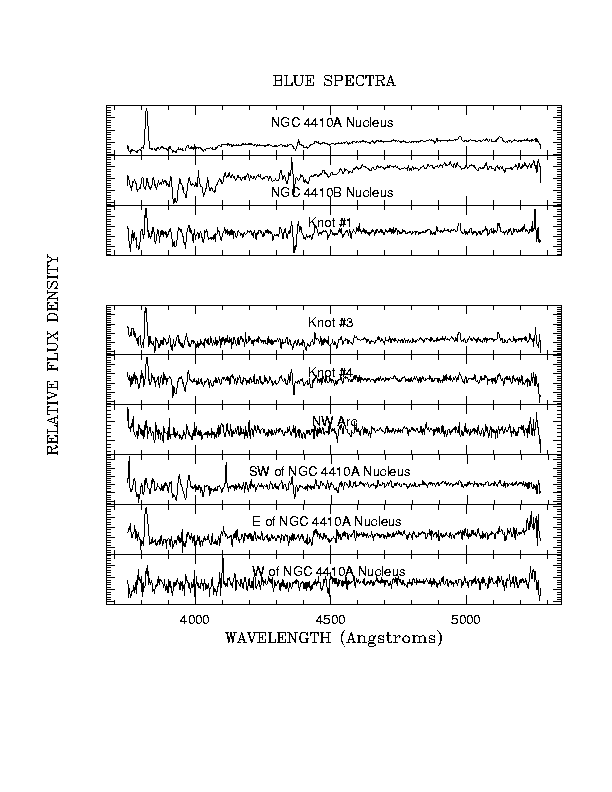
LONG-SLIT OPTICAL SPECTRA

Optical longslit spectra of NGC 4410 were obtained on
1991 December 19 - 20 using the
Double Spectrograph on the Palomar
5m Hale telescope.
In the red
channel, a spectrum
with a resolution of
2.5 Angstrom and
total wavelength coverage of 6340 - 7000 Angstroms was obtained, while
the blue spectrum has
a resolution of 6 Angstrom and a wavelength range of 3747 -
5250 Angstroms.
We made observations
at five slit positions in the NGC 4410 system,
aligned across the nucleus of NGC 4410A and various knots and
features observed in the narrow-band image.
Individual exposures were 15 minutes in duration.
The nucleus of NGC 4410A has very broad lines (FWHM ~ 600
km/s). The NGC 4410B nucleus and the filamentary
features also appear to have somewhat broad lines
(FWHM ~ 400 km/s) compared to those of the knots
(FWHM ~ 200 - 300 km/s).
Comparison of the observed line ratios
with standard diagonostic line-ratio diagrams used to distinguish
ionization mechanisms
confirms that the bright knots of ionized gas
are
H II regions.
In contrast, the nuclei of the two galaxies fall in the
Low Ionization Emission Line Region (LINER) regime.
The
[N II]6584/H-alpha ratio is high in both nuclei,
and the
[S II]6717/H-alpha and [O I]6300/H-alpha ratios
are enhanced
in the NGC 4410A nucleus. The fainter NGC 4410B nucleus is undetected
in
[S II]6717 and [O I]6300.
The northwestern arc
also has enhanced [N II]6584/H-alpha,
[S II]6717/H-alpha, and [O I]6300/H-alpha ratios,
indicating that ionization is dominated by shocks in this region rather
than H II regions.
The extended gas near the nucleus has line ratios in
between these two extremes, indicating that gas from
both the nucleus and nearby H II regions contributed
to the extracted spectra.
